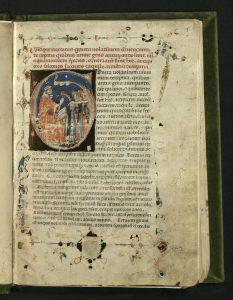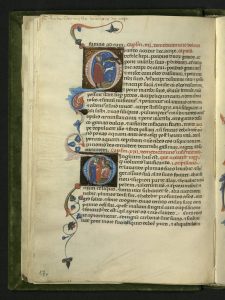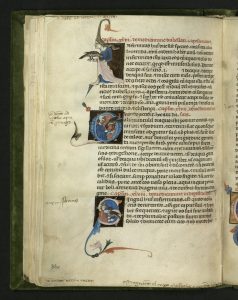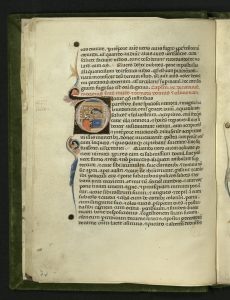Tags
al-Gitrif, al-Malik al-K'amil, al-Mutawakkili, Arabic, architecture, aristocracy, art, Baghdad, birds of prey, Bologna, caliph, chamber, Charles V, Christian, crusade, diplomat, diseases, dogs, Europe, excommunication, Faenz, Fakhr ad-d'in al-F'ars'e, falcon, falconer, falconry, feudal, Frederick II, Germans, Germany, Gothic Textura, historiated initials, Hohenstaufen, Holy Roman Empire, Hunayn ib Ish aq al-Ibad, hunting, illuminator, imperial, Islamic, Italian, Italy, Jerusalem, Knights of Saint John, Latin, literature, Malta, manual, manuscript, medieval, Mediterranean, miniatures, Moamin, Mongolian Empire, moulting, mouse, Palestine, papacy, parchment, Persian, physician, poetry, science, scribe, Sicily, Siege of Parma, sport, Sufi, sultan, Syrian, Theodore of Antioch, translator, vernacular
f
“In quantum enim sunt reges non habent propriam delectationem nisi venationem” — Moamin
“A wise falcon hides his talons.” — Proverb
Liber Moamin falconrii de Scientia venandi per aves et quadrupeds
Facsimile. The so-called “Wiener Moamin” was created on the Italian penisula in the second half of the 13th century at the request of Frederick II of Hohenstaufen, King of Sicily and Jerusalem, king of the Germans and the Holy Roman Empire. It is illuminated with 101 historiated initials and more than 80 miniatures. The Wiener Moamin is a Latin version of an Arabic treatise on falconry, Kitab al-mutawakkili, attributed to one Moamin by the Western world. The original content was probably inspired by two oriental hunting treatises from the 8th and 9th centuries: the falcon book of al-Gitrif and the treatise dedicated to the caliph al-Mutawakkili of Baghdad, a work written by Christian scholar, physician and translator Hunayn ib Ish aq al-Ibad who resided at the court of al-Mutawakkili between 809 and 873. These two works exist only in fragments. As early as this, falconry was embraced as an empirical science as well as a sport.
The work provides an in-depth aspect of hunting with birds and dogs, formatted in five books:
The first book focuses on birds of prey.
Books two and three are devoted to diseases of birds and tried and tested methods of healing.
The last two books deal with the keeping and care of hunting dogs.

Falconer treats a bird’s headache with massage.
The translation of the Arabic version was done by the philosopher Theodore of Antioch, a Syrian naturalist and interpreter, one of the most prominent cultural representatives of the court of Frederick II. This manual became one of the earliest to circulate in medieval Europe. Several copies survive. Copies translated into the vernacular began to appear soon after the first manual appeared
Frederick II (1194-1250) was a falconer of note and participated in correcting the work in 1240, during the siege of Faenz, near Bologna. A few years after the king worked on this book, he wrote his own on the subject, De arte venandi cum avibus. This manuscript was lost in 1248 during the siege of Parma, but other copies exist. For his work, Frederick II used several sources, including the manuscript here.
Frederick II, a larger-than-life figure, counted himself as a direct successor to the Roman Emperors. He was excommunicated four times during a lifelong power struggle the papacy. He took part in a crusade (the sixth, in 1238) and spoke six languages, including Arabic. He was married three times and had at least nine mistresses, with whom he had illegitimate offspring. He was also an avid patron of art, poetry, literature, and architecture.
Frederick II ruled over most of what is now Italy and Germany as well as territories around the Mediterranean (including Malta and Palestine.) He is recognized as an enlightened ruler over a multi-cultural multitude of people. Frederick II was an enthusiast of Arabic culture and became acquainted with falconry through personal contacts with representatives of the Islamic world. One of his teachers was Fakhr ad-d’in al-F’ars’e, a Persian Sufi and advisor to sultan al-Malik al-K’amil, who stayed at the Sicilian court as a diplomat. It is probable that he gained firsthand knowledge of Arabic falconry during wars conducted in 1228 through 1229. He obtained a copy of Moamin’s manual on falconry during this time.
Falconry was a popular sport and status symbol among aristocracy in medieval Europe, the Middle East, and the Mongolian Empire. There is some evidence of its use by commoners, although that was likely unusual due to the commitment of time, money, and space. So valuable were falcons that when Charles V ceded Malta as a fief to the Knights of Saint John, the feudal rent was the annual payment of a Maltese falcon. Scholars differ on the origin of falconry. Some speculate that it entered Europe through warring Germanic tribes. The Arab world claims a two thousand year headstart before Frederick II mastered it.

An elegant lady falconer giving medicine to a sick bird.
The text is laid out in one-column in a uniform script of dark brown ink with red chapter headings. The historiated initials range form 4 to 10 lines in size. The initials offer information along with the text. The initial opening the section on fol. 7v, for instance depicts the mouse chamber of the falcons. During the annual moulting in the late spring, the birds were secluded by the falconer in a specially made chamber.

Falcon renewing its flying feathers.
The initials are enhanced by flower and leaf forms which spread over the parchment. The painters of the manuscript added decorative interest to scientific text and image.
Marginal notes, written in Italian, give precise instructions to the illuminator, detailing which scenes to paint in the fields of the initials written by the scribe. Written by a single scribe, the script is Gothic Textura, identified by two forms of “r” and sharp, straight, angular lines.
The facsimile is bound in a manner of a time later than the text block — a mid-century fifteenth sample — green patterned velvet covers and two metal clasps. Facsimile edition of three hundred and eighty-one, two hundred and twenty of which are reserved for the Arab Region. Rare Books copy is no. 39.

You must be logged in to post a comment.